How to clean the chimney pipe yourself: we study the
Cleaning chimney pipes is not such an attractive activity, but it is strictly necessary to maximize the life of this element and increase its efficiency.
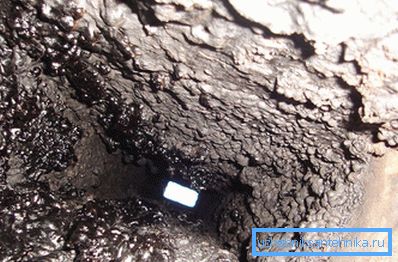
The main reasons for cleaning the chimney
Why is it so necessary to monitor the state of the smoke channels:
- First, the condition of any chimney directly determines the safety of the residents. Carbon monoxide, unlike ordinary smoke, is invisible, which is why it is so dangerous. In addition, it does not smell, and carbon monoxide poisoning can be fatal.
- The condition of the chimney determines the correct operation of the fireplace or stove. To provide high-quality traction, the lumen of the pipe must have an area that was determined by special mathematical calculations. Due to fouling with soot, the area of this gap will decrease, which will lead to a deterioration in the quality of thrust. Having reached a certain critical value, the lumen will not allow the fireplace to function normally.
- The walls of the chimney are constantly subject to chemical reactions and temperature factors, all of which adversely affect their condition.. Cleaning the chimney pipe must be done in a timely manner, otherwise the soot will not give the opportunity to see and take timely measures to eliminate possible cracks and defects that may appear on the walls of any chimney over time.
- For proper operation of the exhaust channel, the walls must be heated.. Soot, which is constantly upset on them, prevents heating. All this leads to the fact that the chimney will warm up much longer.
- Soot can cause fire. This is due to the fact that its burning provokes sparks and small tongues of flame, which can provoke a real fire.
- From the street into the chimney pipe can get a variety of foreign objects that will interfere with the operation of the chimney (even if it is perfectly designed and designed). Therefore, it is necessary to strictly follow the rules for which to regularly conduct a revision of the state of the pipe.
Basic chimney cleaning methods
To date, cleaning of pipes and chimneys can be implemented in several basic ways. Of all the variety of methods, you should choose only proven methods for cleaning chimneys.
Since the fight with soot has been going on for several hundred years, there are secrets of how to quickly and accurately clean the chimney from soot.
Chimney Cleaning Tips
- If you add rock salt to the firewood while burning, this will help prevent the formation of soot.

- One of the popular folk remedies is cleaning chimneys with potato peels. To implement this method, it is necessary to heat and pour half or a whole bucket of potatoes, which are pre-cut into small pieces, into a blazing fire. The steam that will be created under these conditions will contain starch. Starch will soften and decompose the soot, which contributes to its easier lag behind the walls of the chimney channel.

- Proved high efficiency aspen logs, which are used for cleaning. In this case, the chimney is cleaned due to the effect of high temperatures that cause burning. When burning wood from aspen, strong traction is formed, which is able to carry out all the ash flakes from the smoke exhaust channel.
This method is considered the most dangerous, because it is associated with significant loads that can easily destroy the entire channel. If a large amount of soot has accumulated in the chimney, it is better to use other methods.
Tip: Aspen can be replaced by birch, which will also show high efficiency. If birch is to be used, the log should be cleared of bark.
If we talk about folk remedies, earlier in the old days they often used oil from coniferous trees. Today, special chemical reagents are increasingly used to clean the flue duct with their own hands.
Mechanical cleaning
To implement a mechanical method of cleaning the chimney, invite a specially trained person, namely the chimney sweep. For many, this character is increasingly associated with children's fairy tales, but in fact now this profession is quite in demand. Its main task is to mechanically clean the exhaust pipe. If the work is done according to the technology, the results will pleasantly surprise you.
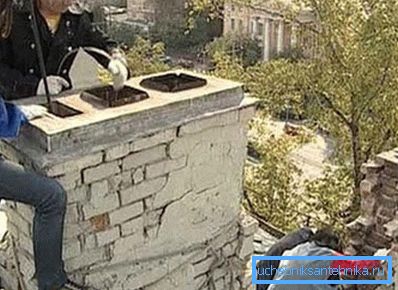
Self-cleaning chimney
Instructions for self-cleaning of the chimney is not so difficult, the main thing is to understand the technology of work and get acquainted with the necessary tool.
- Ruff. Typically, this tool is used for round pipes, their diameter should not be 20% larger than the diameter of the chimney. On the one hand, the ruff is securely fastened with a carabiner on a metal cable; on the other hand, a special core or a spherical weight is suspended from it.
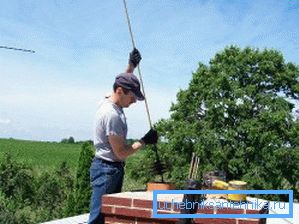
- Brush or scraper. If the section of the pipe for the exhaust smoke has a rectangular or square section, then use a brush. The main feature of the brush handle is that, if necessary, additional sections can be easily extended to it.
Tip: At first, you can use the scraper, it will remove the upper, most dense layer of soot, and further work will continue with a ruff or brush.

- Round heavy metal core. This tool is used to eliminate large congestion, which are formed as a result of the collapses of bricks or debris. The optimal shape is the core of a spherical shape, which is about 65% of the cross section of the entire extraction channel. In some cases, this “projectile” is used to weight the ruff.
Tip! Eccentric objects, including dumbbells, cannot be used as cores. This is due to the fact that when they fall, they may be so strongly stuck in the channel that they will have to completely dismantle the entire masonry.
Dry cleaning of chimneys
The modern materials market offers chemically active soot products that are sold in powder, liquid or solid form. The principle of their operation is as follows: during the combustion process, a gas harmless to humans is released from the chemically active substance, which is capable of decomposing soot and preventing its re-formation. The price of these components is quite acceptable, so everyone can buy it.
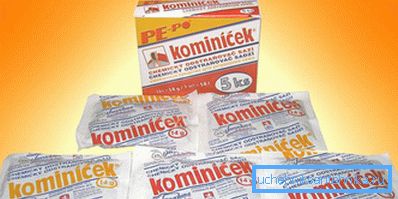
Useful tips and basic safety rules
Naturally, cleaning the chimney from the roof surface is fraught with some danger.
When performing these works, you must be as careful as possible and follow all safety rules.
- First, all work is recommended to perform in a dry and completely windless weather.
- If your house has a sloping roof, then in this case it is mandatory to use insurance when working. The kit for cleaning channels should include a professional safety belt, which is used by installers - spiers or climbers. If such equipment is not, then, in extreme cases, you can use the usual strong rope.
- All furnace openings must be tightly closed before starting work. This will prevent the ash from spreading throughout the house. If your fireplace does not have a door, then it will be perfectly replaced by a damp cloth.
- If there is no way to get foreign objects out of the smoke outlet, then it is best to push them down.
- If the carbon has a thickness of more than 2 millimeters, it is necessary to carry out major cleaning. If the thickness of the deposits is less than or equal to 2 mm, then folk remedies can be used to clean it, including chemical reagents.
- If you have a fireplace with an open hearth, then it should be cleaned with a brush from the bottom.
- Upon completion of the cleaning process it is necessary, starting from the top of the cleaning hole, carefully remove all soot. At the very end, do not forget to clean the base and the main firebox itself.
- After completion of the chimney should be carefully inspected. All found cracks and cracks must be covered with clay, on top of these places are painted with water-based paint.
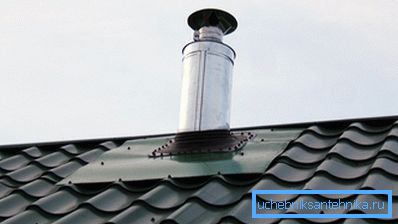
Conclusion
There are several basic ways to remove soot from the chimney. The choice of one of them for each specific case is determined by various factors, among which it is worth noting the level of canal contamination and the type of roof of your house.
In the presented video in this article you will find additional information on this topic.